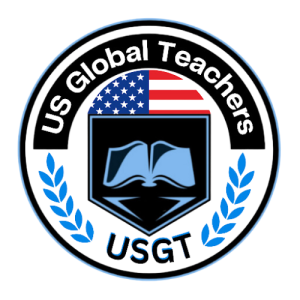For International Teachers who want to work in the US, the H-1B visa program is a successful path. However, this route is frequently competitive and difficult due to the yearly cap of 65,000 visas, plus an additional 20,000 for those with a U.S. master’s degree or above. Understanding the idea of H-1B cap exempt occupations can help international educators who want to teach in the United States find chances that get around these restrictions. With the help of US Global Teachers, you can easily apply for the H1B Cap exempt visa and with the help from experts can increase the chances of getting visa faster than average time.
What Does H-1B Cap Exempt Mean?
Employers are excluded from the yearly visa quota when they hire foreign experts for an H-1B cap exempt employment. This implies that certain firms are neither restricted by the limits or have to wait for the regular application periods in order to sponsor H-1B visas. Employers eligible for cap-exempt status include government research institutes, nonprofit research organizations, and higher education institutions, according to U.S. Citizenship and Immigration Services (USCIS).
Identifying Cap-Exempt Teaching Positions
For educators, cap-exempt positions are typically found in:
- Colleges and universities: These are considered higher education institutions and are exempt from the yearly quota when sponsoring H-1B visas.
- Nonprofit Research Organizations: Certain nonprofit educational organizations that do research may also be exempt from the cap.
- Affiliated Entities: University-affiliated businesses, such research institutes or teaching hospitals, may be eligible for cap-exempt status.
It’s important to remember that not all teaching jobs are free from the restriction. For example, unless they are specifically affiliated with a qualified institution, many K–12 public and private schools do not qualify as cap-exempt. Even so, certain public school districts can be eligible for cap-exempt status if they can show that they have a formal relationship or affiliation with a higher education institution.
Benefits of Cap-Extempt Positions
Securing a cap-exempt teaching position offers several advantages, but before that, you need to know the requirements for H1B cap exempt:
- Year-Round Application: Unlike cap-subject positions that require adherence to specific filing windows, cap-exempt employers can file H-1B petitions at any time, providing greater flexibility.
- No Lottery System: Cap-exempt positions are not subject to the H-1B lottery, increasing the likelihood of visa approval.
- Immediate Employment: Without the constraints of the annual cap, educators can often begin their roles without prolonged waiting periods.
Challenges to Consider
While cap-exempt positions offer notable benefits, there are challenges to be aware of:
- Limited Availability: Cap-exempt employers are fewer, which may limit the availability of positions in certain geographic areas or specialties.
- Eligibility Criteria: Not all educational institutions qualify for cap-exempt status, and determining eligibility can be complex.
Steps to Pursue a Cap-Exempt Teaching Position
- Investigate Possible Employers: Determine whether organizations, such as colleges, associated nonprofits, and certain public school districts, are eligible for cap-exempt status.
- Make Contact with Recruitment firms: Working with education staffing firms will help you find a job more quickly and provide you access to a network of cap-exempt businesses.
- Assemble Application Materials: Verify that your qualifications, credentials, and résumé satisfy both the particular needs of prospective employers and U.S. criteria.
- Recognize Visa Requirements: Learn about the H-1B cap exempt visa application procedure, including the necessary paperwork, deadlines, and any costs involved.
- Keep Up: Since immigration laws are subject to change, it’s important to keep abreast of the most recent rules and, where necessary, seek expert advice.
Alternative Visa Options: The J-1 Visa
The J-1 visa offers an option for educators who might not be able to get a cap-exempt H-1B post. For a maximum of three years, with possible extensions, foreign educators are permitted to teach in the United States under the J-1 Exchange Visitor Program. Unless a waiver is secured, participants in this program, which aims to foster cultural interchange, must return to their home country for two years after finishing.
Navigating the Process with Educational Staffing Agencies
Finding a teaching job in the United States and understanding visa requirements can be difficult processes. International teachers and U.S. institutions are the focus of educational staffing organizations, commonly referred to as teacher recruiting businesses. These organizations help with visa applications, and provide assistance during the transfer.
One such organization is US Global Teachers, which is well-known for its proficiency in hiring students for educational programs. They provide full help to foreign instructors who want to work in the United States, specializing in H-1B cap-exempt visas and also offering J-1 visa services. They are a useful partner for instructors looking for chances in America because of their in-depth knowledge of the American educational system and immigration procedures.
Conclusion:
Navigating visa requirements and locating appropriate job openings are essential steps in pursuing an international teaching career in the United States. Gaining knowledge about H-1B cap-exempt jobs will greatly increase your chances of landing a job free from the yearly visa cap. You may start a fulfilling teaching career in the United States by making use of tools like educational staffing firms and remaining up to date on visa possibilities like the J-1. When ever you need any help or want to ask something, contact us, and you can also share your CV/Resume with us.




